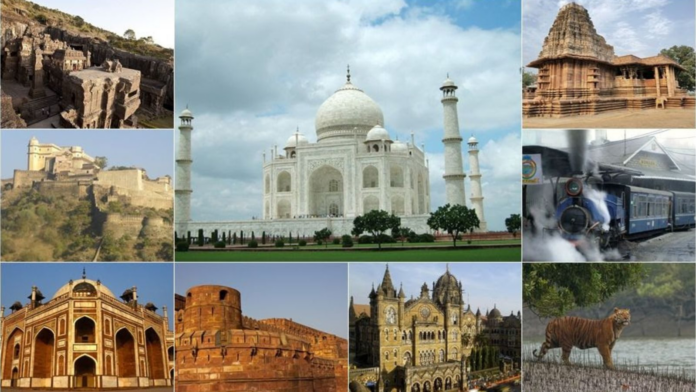India boasts 42 UNESCO World Heritage Sites, blending cultural and natural treasures, with Maharashtra leading in numbers and Ahmedabad as the first World Heritage City.
According to the PATA India Chapter, UNESCO World Heritage Sites are landmarks and areas recognized for their cultural, historical, or scientific significance, enjoying legal protection under an international convention administered by UNESCO. These sites hold “cultural and natural heritage worldwide of outstanding value to humanity.” PATA India Chapter, which was established in India by PATA HQ in 1974, with a wide cross-section of stakeholders from the travel, tourism, hospitality, and aviation industries
The designation of World Heritage Sites aims to ensure the protection of endangered cultural and natural resources, promote sustainable development primarily through heritage tourism, and uphold UNESCO’s unique mandate. Attaining UNESCO World Heritage status can elevate lesser-known ruins or geological formations to global recognition as major tourist attractions.
Heritage is a legacy from the past, a part of our present, and a gift to future generations. Our cultural and natural heritage are irreplaceable sources of life and inspiration.
India’s Contribution to World Heritage
India proudly hosts 42 World Heritage Sites, with 34 classified as cultural, seven as natural, and one, Khangchendzonga National Park, as mixed. This makes India the country with the sixth-most World Heritage Sites globally. The Ajanta Caves, Ellora Caves, Agra Fort, and the Taj Mahal were the first sites in India to be listed, recognized in the 1983 session of the World Heritage Committee. The latest additions, Santiniketan and the Sacred Ensemble of the Hoysalas, were inscribed in 2023.
Notably, Dholavira, Harappan City in the Rann of Kutchh, became India’s 40th UNESCO World Heritage Site, Santiniketan the 41st, and the Sacred Ensemble of the Hoysalas the 42nd. India also has sites that have faced endangerment: the Manas Wildlife Sanctuary (1992-2011) due to poaching and militia activities, and the monuments at Hampi (1999-2006) due to risks from increased traffic and new constructions.
Regional Highlights and Challenges
Maharashtra boasts the largest number of World Heritage Sites in India, with a total of five: Ajanta Caves, Ellora Caves, Elephanta Caves, Chhatrapati Shivaji Maharaj Terminus, and the Victorian Gothic and Art Deco buildings of South Mumbai. This distinction highlights the state’s rich cultural tapestry and historical significance.
Ahmedabad, also known as Amdavad, holds the distinction of being India’s first UNESCO World Heritage City. This city, steeped in history and tradition, offers a seamless blend of centuries-old architectural marvels and contemporary designs, representing a bustling cosmopolitan hub in Gujarat.
India continues to work towards preserving its heritage with 57 sites currently on its tentative list for future nomination. These efforts underscore the country’s commitment to safeguarding its cultural and natural treasures for future generations.
As custodians of our heritage, it is imperative that we continue to support and promote the conservation of these invaluable sites, ensuring they remain beacons of our shared human history and natural beauty.











